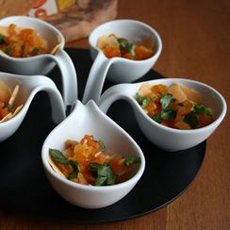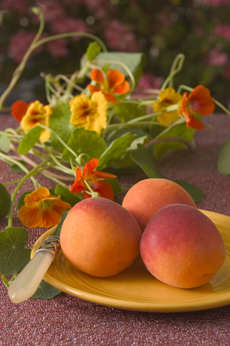RECIPE: Apricot Cilantro Salsa
|
|
Salsa is simply the generic word for “sauce.” Many centuries before tortilla chips were invented, Aztecs and other Mesoamericans ground ingredients into sauces for meat and fish. This salsa recipe was developed as a sauce for chicken or fish, as opposed to a dip for tortilla chips. It comes from Landana Cheese, a Dutch producer specializing in Gouda-style cheeses—hence the unusual addition of cheese. You can omit the cheese, and the salsa is just as good. RECIPE: APRICOT CILANTRO SALSA FOR FISH & POULTRY Ingredients |
|
|
Preparation 1. CUT the apricots into a small dice. Remove the leaves of cilantro from the stems and mince them. Juice the lime and grate the zest. 2. COMBINE the apricots, cilantro, lime juice and zest and paprika and allow the flavors to blend for a half hour or longer. Shave flakes from the cheese and divide them over appetizer spoons or appetizer dishes. Then divide the apricot-coriander salsa over the cheese. |
||




